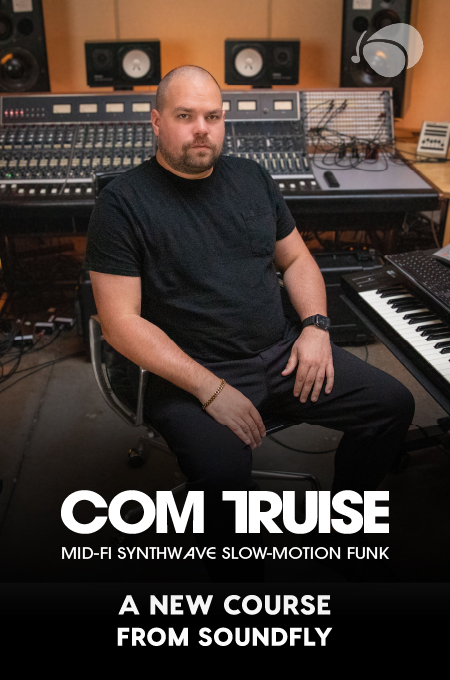
+ Learning to record and mix your vocals at home? Check out Soundfly’s popular online music production courses today! Subscribe for unlimited access here.
One of the biggest challenges that bedroom producers and songwriters face is maximizing their time so that they can create and release music in a timely fashion and own their creative responsibilities as work responsibilities. It’s essential for producers and home recording artists these days to manage their time so they can both work as much as possible and get as much work done as possible in that time.
By developing consistent workflows, streamlining one’s process (like for example using shortcut commands), setting limitations as well as reasonable yet strict deadlines, you will begin to see tasks getting completed faster and projects sounding better. In addition, focusing on optimizing your time management will naturally leave you with good habits and higher levels of confidence.
With that said, here are seven of my best tips that will help set you up for success every time you sit down to create. And if you’d like additional personalized help, all of our Soundfly Mentors are equipped with time management and coaching training to help you take your project to the next level quicker and make it overall better sounding. Learn more about joining a four-week mentorship session here, and tell us about your personal musical goals here.
1. Make DAW templates and use shortcuts and hotkeys.
Making templates is a helpful way to eliminate wasted time when you’re composing, recording, and mixing. Not only do you want to be ready to work when inspiration hits, but your workflow should continue to be effective as you finish your project or help your clients finish their projects.
Logic Pro X has a number of built-in templates based on genre which can be a helpful starting point but always feel free to customize to your own needs. As you continue working on different projects, you’ll naturally start making personalized templates to prep for sessions. And although each of which may require different demands in terms of instruments, effects, or amounts of inputs, you’ll be starting from a higher place than the ground.
2. Set time limits.
Setting time limits for tasks is very important in order to finish everything that you set out to do in a given day. Whether you’re working for a client or on your own music, it’s good to be aware of how much time you spend completing tasks, and to hold yourself accountable to do them in a timely fashion.
One way to optimize the time you spend on your work is to organize your day around specific micro-goals, as opposed to a single larger one like a “mix album.” With each micro-goal, you can set a time limits of 30-minute blocks or several hours depending to make sure you’re keeping yourself on track.
3. Organize your samples for easy and quick access.
Create clearly labelled folders for the samples that you use or think you might use soon. You can categorize your samples in broad terms, for example, as acoustic drums, drum machine, synth, vocals, or by the name of the sample pack they came from. Then, from there, you can categorize them by type, such as one shots, loops, ambience, pads. Organizing your folders so you can find the right sound a lot quicker is optimal for fast-paced writing sessions, bigger and complicated projects, or time-sensitive work with approaching deadlines.
4. Create presets in effects and instruments that you use frequently.
Creating presets for the instruments and effects that you use often can help you solidify a consistent sound, and help eliminate extra time spent changing parameters in stock presets. Personalized presets can also be helpful when tracking vocals and instruments by giving you a head start in the rough mixing process. The more confident you can be in your presets, the less you have to worry about laying down tracks that just don’t sound right.
5. Label your projects.
When saving your projects, make sure that you label them clearly so you can recall their specificities. You can also use folders to organize different projects and versions of songs. Here’s an example of how I often label my tracking projects:
- SongTitle_Mix#/Version_Date — so, for example, you get Bricks_Mix1_04.04.19.
When you make a duplicate or slight adjustment to a version of the track, you can then add that to the label, as Bricks_LessBass_04.04.19 or Bricks_Mix3a_04.04.19.
6. Eliminate distractions.
Try to create a space that is free from distractions, especially if you’re easily susceptible to checking social media during down times, like when a session is saving. One way to do this is to just be diligent about taking periodic breaks and working towards a goal before you get to your break. Another way is to shut your wifi off and put your phone on airplane mode when you’re in your home studio.
7. Plan ahead.
Planning ahead by clearing your schedule so that you can manage your time and responsibilities may sound obvious, but if you don’t make a conscious effort it can make a huge difference. Sometimes you just have to set that time aside and say “No.” Whether it’s a social function you have to miss out on or whether you’ve taken on too much work, planning ahead to give yourself ample focus and stress-free windows is one of the most essential things you can do to optimize your working time management.
It’s always better to move at a steady pace than to try to do everything all at once. In addition, once the people you work with understand that you prioritize quality over quantity, they will respect you and value your time and dedication to your craft.
Continue learning with hundreds of lessons on mixing, DIY home recording, electronic music production, beat making, and much more, with Soundfly’s in-depth courses, like Modern Pop Vocal Production, Advanced Synths & Patch Design, and Modern Mix Techniques. Subscribe for unlimited access here.




